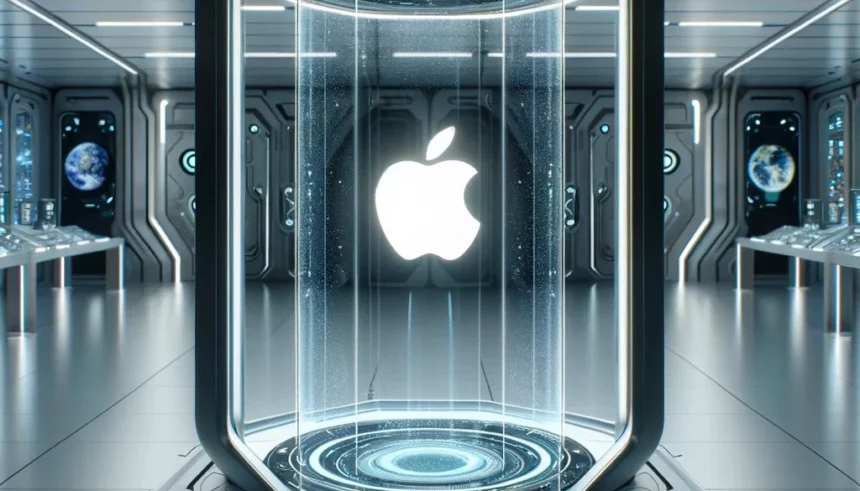Technology has consistently blurred the lines between imagination and reality, from self-driving cars to voice-activated assistants. The latest buzz surrounds the concept of teleportation, and more specifically, whether Apple—a company synonymous with innovation—is exploring this frontier. Could the idea of teleportation, long confined to science fiction, become a tangible reality through Apple’s technological prowess? Or is it just another far-fetched rumor? This article dives deep into the concept of “Apple Teleport” to separate reality from speculation.
What is Teleportation, and Why Does It Fascinate Us?
Teleportation, in simple terms, refers to the transfer of matter or energy from one point to another without traversing the physical space between them. It has been a popular theme in science fiction for decades, captivating imaginations through shows like Star Trek and movies like The Fly.
The allure of teleportation lies in its promise of instant travel, eliminating the constraints of time and distance. Imagine stepping into a booth in New York and appearing moments later in Tokyo. Such a breakthrough would revolutionize industries, economies, and personal lifestyles. However, despite its tantalizing potential, teleportation remains largely theoretical, governed by principles in quantum mechanics and far removed from practical application.
This is where the term “Apple Teleport” enters the picture, suggesting that the tech giant might be on the cusp of making teleportation more than a fantasy. But is there any substance to these claims?
The Origins of the “Apple Teleport” Speculation
The speculation around “Apple Teleport” started as a whisper in tech forums and blogs before gaining momentum through social media and tech enthusiasts. Some point to Apple’s history of registering trademarks and patents as a clue. Over the years, Apple has filed patents related to advanced technologies, some of which include augmented reality (AR), virtual reality (VR), and quantum computing.
In 2023, rumors began circulating about a patent that vaguely mentioned “matter transportation devices,” sparking debates on whether Apple was seriously venturing into teleportation technology. Additionally, Apple’s secrecy around its research and development projects only fuels such speculation. But as groundbreaking as it sounds, teleportation technology is far more complex than a new iPhone or MacBook.
The Science Behind Teleportation: Where Do We Stand?
To understand the feasibility of “Apple Teleport,” it’s essential to grasp the current state of teleportation science. Researchers in quantum physics have demonstrated a form of teleportation known as “quantum teleportation.” This process involves transferring quantum information (such as the state of a photon) between particles over long distances. Quantum teleportation has been achieved in controlled laboratory environments, with distances reaching up to 1,200 kilometers using satellites.
However, quantum teleportation deals with data, not physical objects. The idea of teleporting humans or objects requires dismantling matter at one location and reconstructing it perfectly at another. This introduces colossal challenges:
- Data Complexity: The human body contains an estimated 37 trillion cells, each with its own complex structure. Recording this data with precision and transmitting it without error is currently beyond our technological capacity.
- Energy Requirements: The energy required to disassemble and reassemble matter on such a scale is astronomical.
- Ethical Implications: Even if it were possible, questions about identity, consciousness, and the morality of disassembling a human being arise.
Given these challenges, it’s evident that teleportation as we imagine it in science fiction is still a distant dream. But does Apple have some unique angle to overcome these hurdles?
Could Apple Actually Develop Teleportation Technology?
Apple has a long history of taking existing technologies and refining them into marketable innovations. The iPod wasn’t the first MP3 player, and the iPhone wasn’t the first smartphone. What set Apple apart was its ability to streamline functionality, design, and user experience into a cohesive package. Could Apple do the same with teleportation?
There are three possible scenarios:
Advanced Quantum Research
Apple’s interest in quantum computing is well-documented, with the company investing in related technologies to enhance encryption, processing power, and AI capabilities. If Apple is exploring teleportation, it’s likely in the context of quantum information transfer rather than physical matter. This could have applications in secure communication and data transfer rather than human travel.
Augmented Reality as “Virtual Teleportation”
A more plausible interpretation of “Apple Teleport” is an advanced AR or VR system that simulates teleportation. With technologies like Apple’s Vision Pro headset already pushing the boundaries of immersive experiences, the company could develop a platform that allows users to “teleport” virtually to distant locations. Such a system might integrate real-time holographic projections, tactile feedback, and AI to create a convincing sense of presence.
Speculative Fiction and Marketing
Finally, “Apple Teleport” could simply be a marketing gimmick or a placeholder for a future product unrelated to actual teleportation. Companies often file patents for concepts they have no immediate plans to develop, either to secure intellectual property or to throw competitors off track.
The Impact of Teleportation Technology on Society
If teleportation were to become a reality, the societal implications would be profound. Industries like transportation, logistics, and tourism would undergo seismic shifts. The ability to transport goods instantly could disrupt global supply chains, while personal teleportation could redefine how we think about borders, migration, and cultural exchange.
However, these advancements would also come with challenges. The potential for misuse—from unauthorized entry into secure locations to smuggling—raises significant security concerns. Furthermore, teleportation could exacerbate existing inequalities, with only the wealthiest individuals and nations having access to the technology initially.
Current Innovations That Might Pave the Way
Even if “Apple Teleport” is not a literal teleportation device, there are several ongoing innovations that hint at the direction technology is heading:
- Quantum Computing Advancements: Companies like IBM, Google, and Apple are making strides in quantum computing, which could eventually support the data processing needs of teleportation.
- Holographic Communication: Startups are exploring real-time holographic video calls, which could evolve into more immersive teleportation-like experiences.
- AI and Neural Networks: Advanced AI could help simulate or manage teleportation systems, from optimizing energy usage to ensuring accurate reassembly of matter.
Conclusion: Reality Check or Sci-Fi Hype?
The idea of “Apple Teleport” sits at the intersection of reality and imagination. While true physical teleportation remains in the realm of science fiction, Apple’s history of innovation and interest in cutting-edge technologies make it a compelling candidate to explore related fields like quantum computing or immersive virtual experiences.
For now, the buzz around “Apple Teleport” is more hype than reality. However, it serves as a reminder of humanity’s relentless drive to push technological boundaries. Whether through quantum breakthroughs or augmented reality, Apple and other tech giants will undoubtedly continue to transform the way we experience the world—even if teleportation itself is still a distant dream.
FAQs
What is the concept of Apple Teleport?
Apple Teleport refers to speculation that Apple might be exploring teleportation technology, inspired by patents and the company\u2019s history of innovation. However, it remains largely a mix of rumors and futuristic thinking.
Is teleportation scientifically possible today?
Current scientific advancements, such as quantum teleportation, are limited to data transfer at the quantum level. Physical teleportation of humans or objects is not yet feasible.
What might Apple\u2019s role in teleportation involve?
Apple could focus on related technologies like quantum computing, augmented reality, or virtual teleportation experiences, rather than literal teleportation of matter.
How would teleportation impact society if it became real?
Teleportation could revolutionize industries like transportation, logistics, and tourism while raising ethical, security, and inequality concerns.
Is Apple Teleport just a marketing gimmick?
While there\u2019s no concrete evidence of Apple developing teleportation, the term could be speculative or linked to other innovative projects, like immersive AR or VR platforms.












